
Featured Object: Philippine Emergency Notes
- Post Date: 6/1/2017
- Author: Jake Keister
- Reading Time: 7 minute read
A mere 10 hours after the attack on Pearl Harbor, the Japanese Empire began its invasion of the American Commonwealth of the Philippines. United States military forces stationed in the Philippines were eventually forced to withdraw as the Japanese occupied the islands for 3 years. During Japanese occupation, several guerrilla organizations maintained control over the more remote areas of the islands throughout World War II.
Almost immediately after the occupation began, the Japanese government issued their own currency in pesos and centavos for use in the Philippines. However, many Filipinos rejected the authority of the Japanese to issue it and mockingly referred to the Japanese notes as “Mickey Mouse money.” They instead chose to use the emergency notes issued by local governments.
-
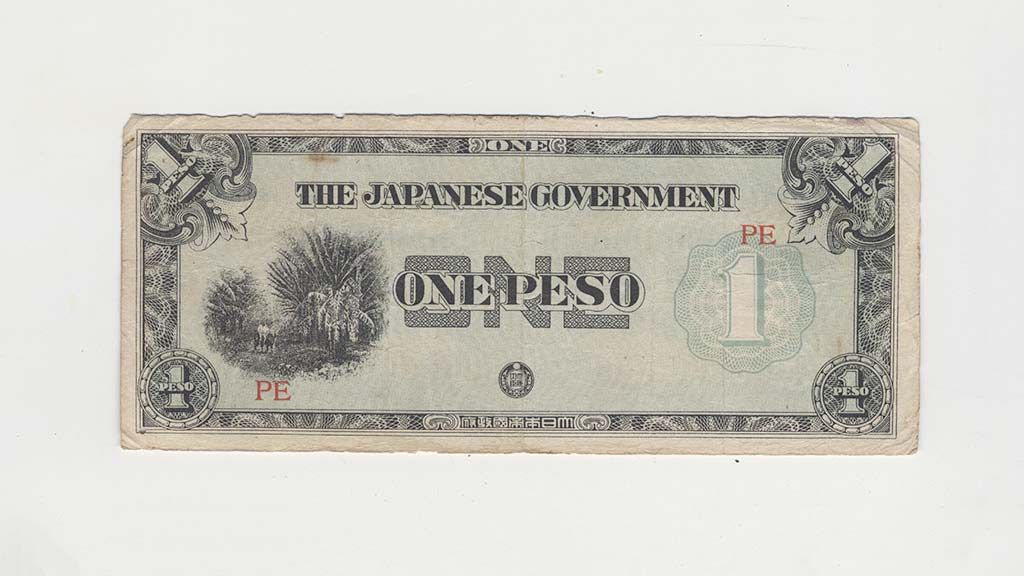 Japanese Government-Issued Philippine Occupation Fiat Bank Note: 1 Peso 1942 1992.23.1623C
Japanese Government-Issued Philippine Occupation Fiat Bank Note: 1 Peso 1942 1992.23.1623C
Guerilla groups needed capital to purchase supplies and to trade within the communities; even if farmers wanted to support the rebels, they couldn’t simply give away supplies. As a result, the groups printed what were called “Emergency Notes” for local use. Emergency notes were first issued under the authority of president-in-exile, Manuel Luiz Quezon, who anticipated the problems that a lack of currency would create in these guerilla zones. President Quezon issued 20,000,000 pesos for circulation in his province of Cebu. This idea spread to other islands and provinces, where local leaders issued their own forms of currency. Not every guerilla group issued emergency notes, however. One example of this practice comes from Major James Cushing, an American commanding the Philippine resistance movement on Cebu. He felt that the local notes created undue suffering on the Filipino populations from the Japanese and instead urged for the use of I.O.Us for necessary monetary transactions.
-
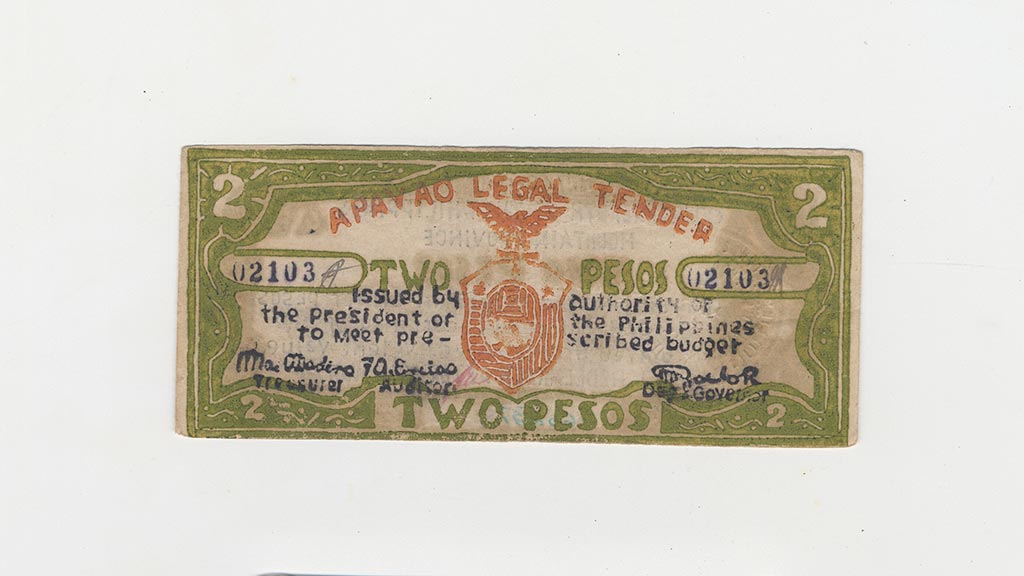 Philippine Commonwealth Government Emergency Circulating Bank Note: 2 Pesos Apayao Mountain Province 1942–1944 1992.23.1663
Philippine Commonwealth Government Emergency Circulating Bank Note: 2 Pesos Apayao Mountain Province 1942–1944 1992.23.1663 -
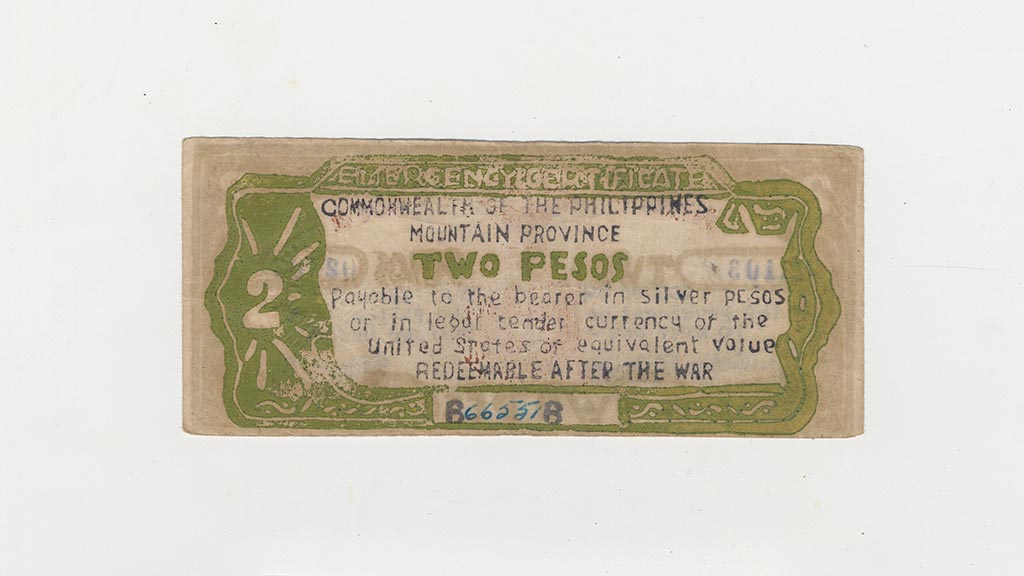
-
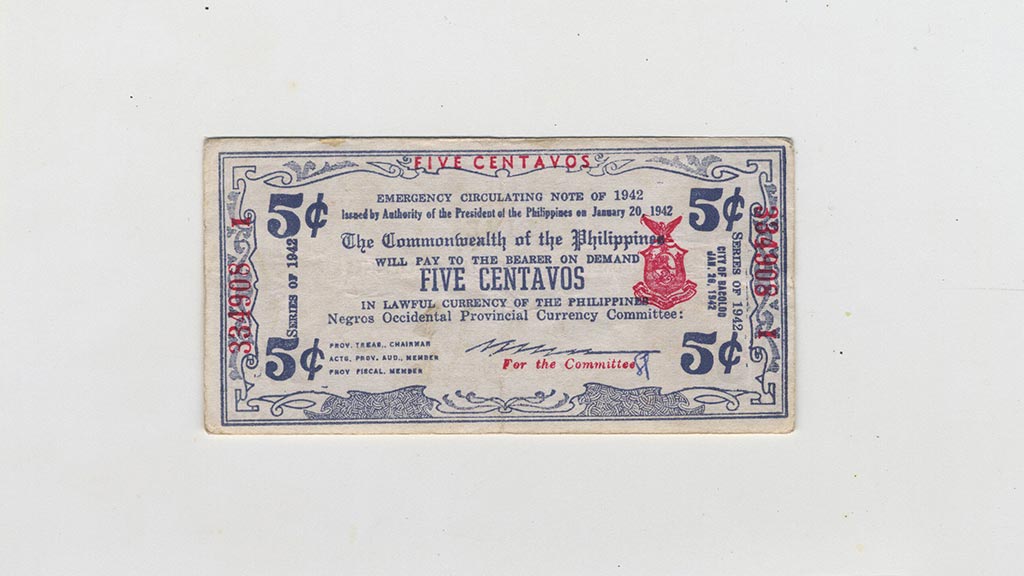 Philippine Commonwealth Government Emergency Circulating Bank Note: 5 Centavos Negros Occidental Province January 26, 1942 1992.23.1699
Philippine Commonwealth Government Emergency Circulating Bank Note: 5 Centavos Negros Occidental Province January 26, 1942 1992.23.1699 -
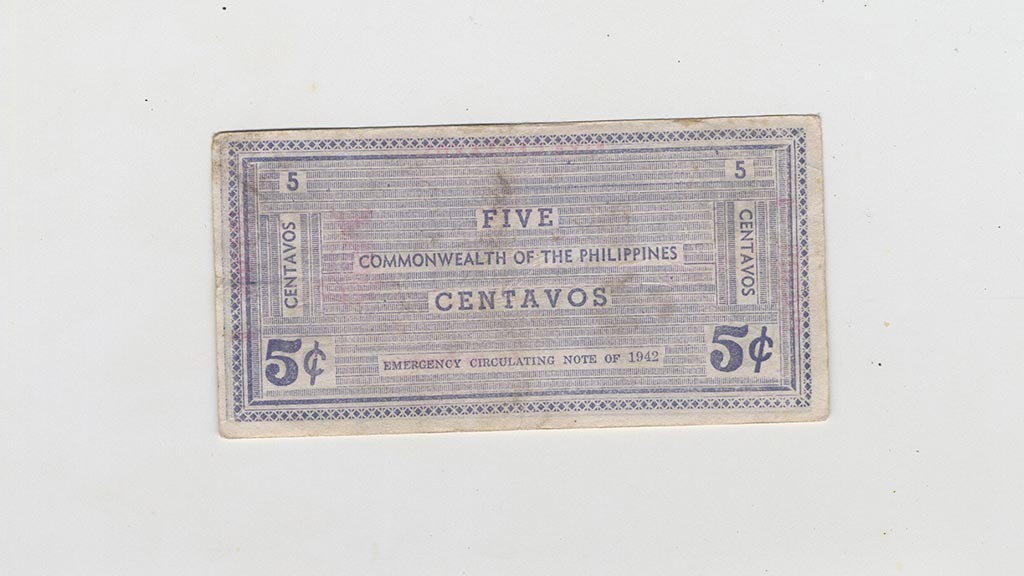
-
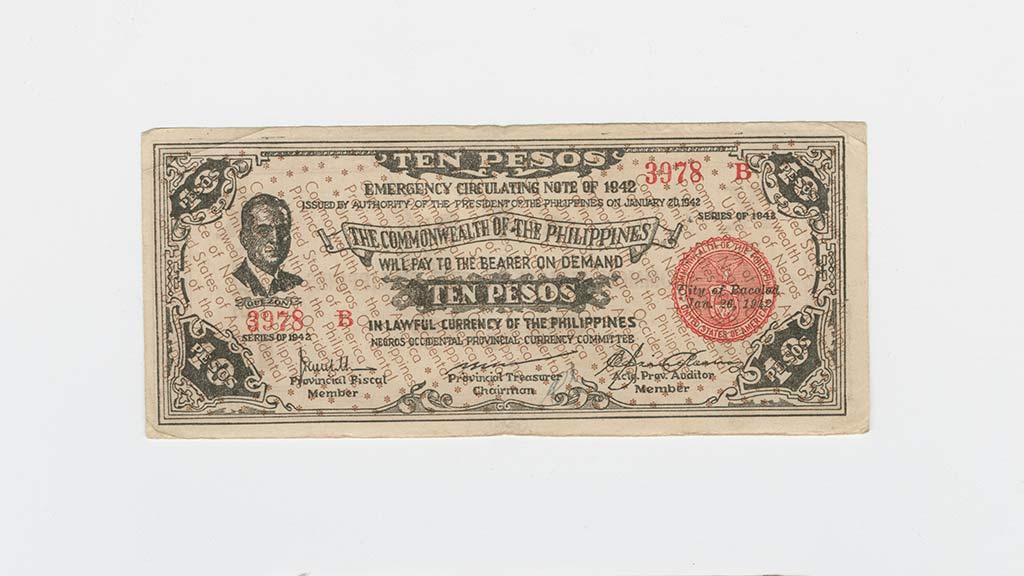 Philippine Commonwealth Government Emergency Circulating Bank Note: 10 Pesos Negros Occidental Province January 26, 1942 1992.23.1707
Philippine Commonwealth Government Emergency Circulating Bank Note: 10 Pesos Negros Occidental Province January 26, 1942 1992.23.1707 -
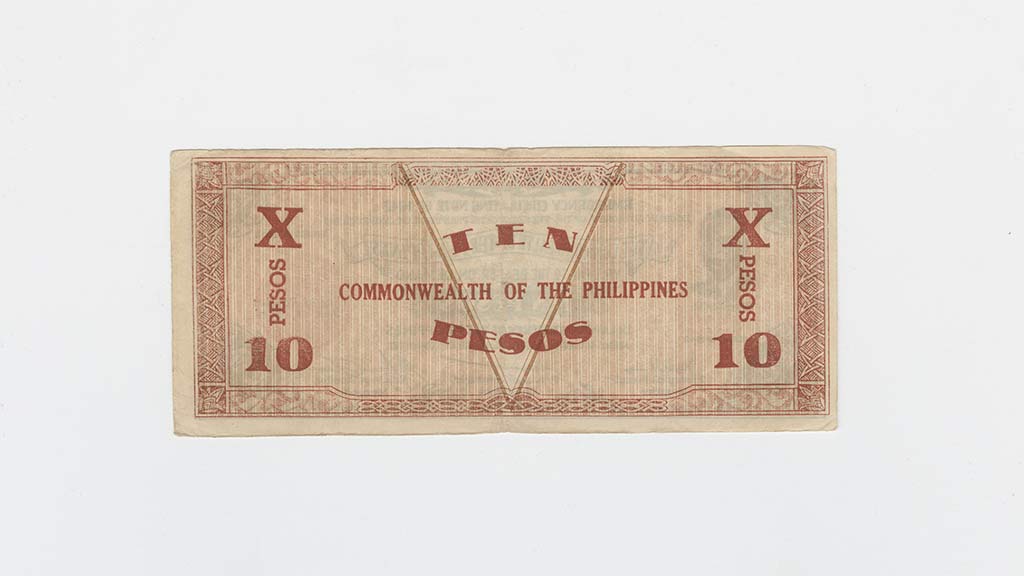
-
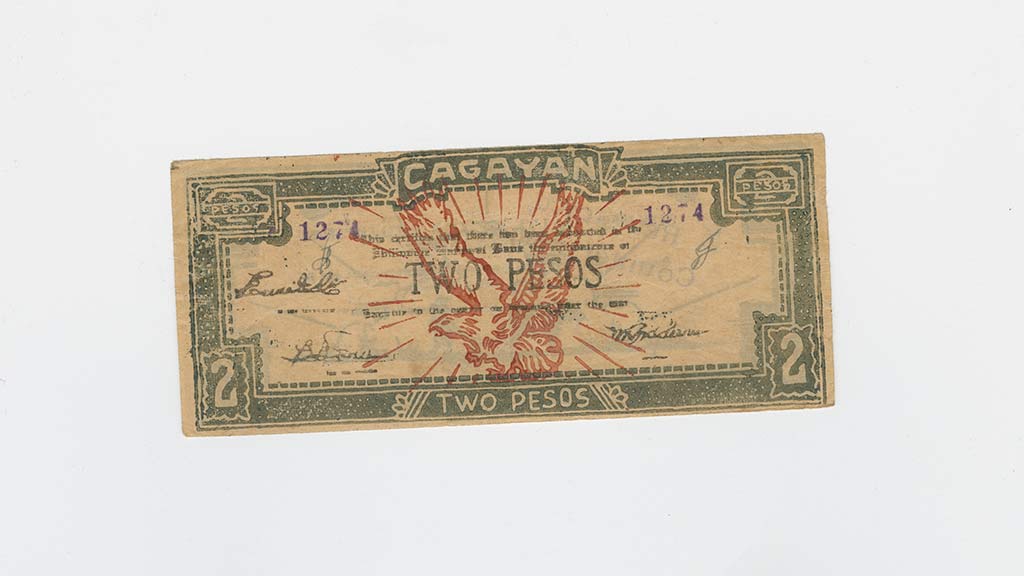 Philippine Commonwealth Government Emergency Circulating Bank Note: 2 Pesos Cagayan Province 1942–1944 1992.23.1715
Philippine Commonwealth Government Emergency Circulating Bank Note: 2 Pesos Cagayan Province 1942–1944 1992.23.1715 -

The emergency notes were often issued by provincial governments. These governments were made up of rebel groups that managed to band together to form a basic municipal structure. Some municipalities could not receive any of the provincially issued notes due to geographical barriers or problems with communication infrastructure and instead issued their own notes.
These emergency notes were accepted at most markets in nearly every province in the Philippines. The refusal to accept this payment was often seen as collusion with the Japanese. Collusion was not tolerated, and many colluders disappeared either during or after the occupation.
The possession of guerilla notes was not without its consequences. The occupation government outlawed the printing, distribution, and possession of these notes as seditious acts. The punishment for this crime was arrest or execution for the offender and similar consequences for family members as well.
Emergency notes were often printed hastily and usually made of whatever material was readily available. Despite this disjointed printing process, very few of the surviving notes have errors.
-
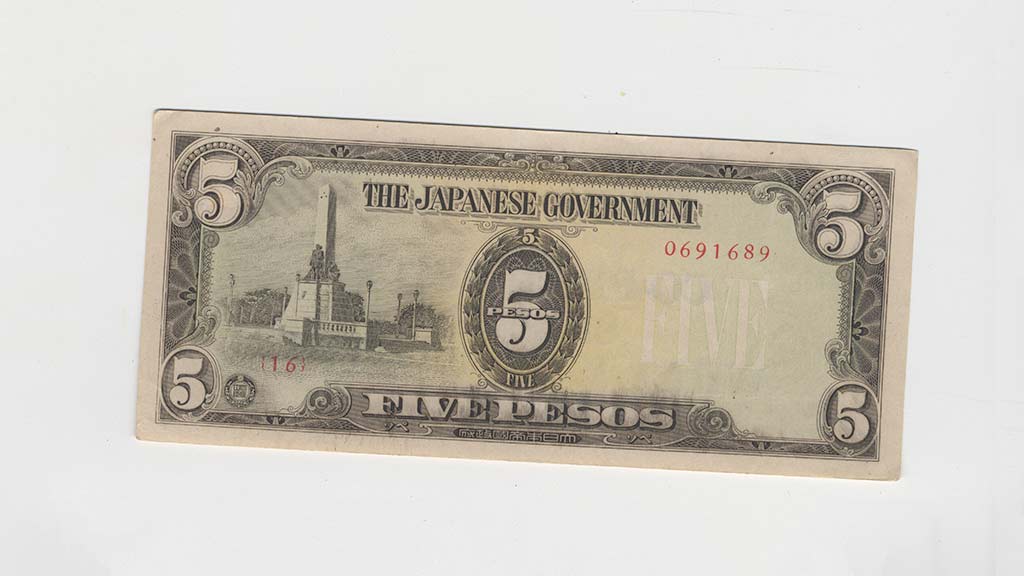 Japanese Government-Issued Philippine Occupation Fiat Bank Note: 5 Pesos 1943 1992.23.1635A
Japanese Government-Issued Philippine Occupation Fiat Bank Note: 5 Pesos 1943 1992.23.1635A -
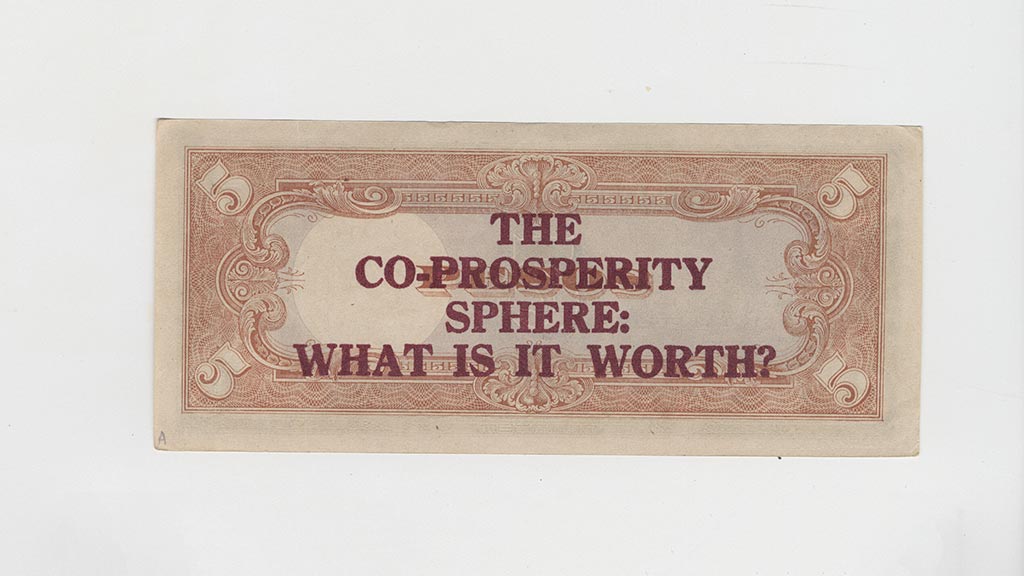
-
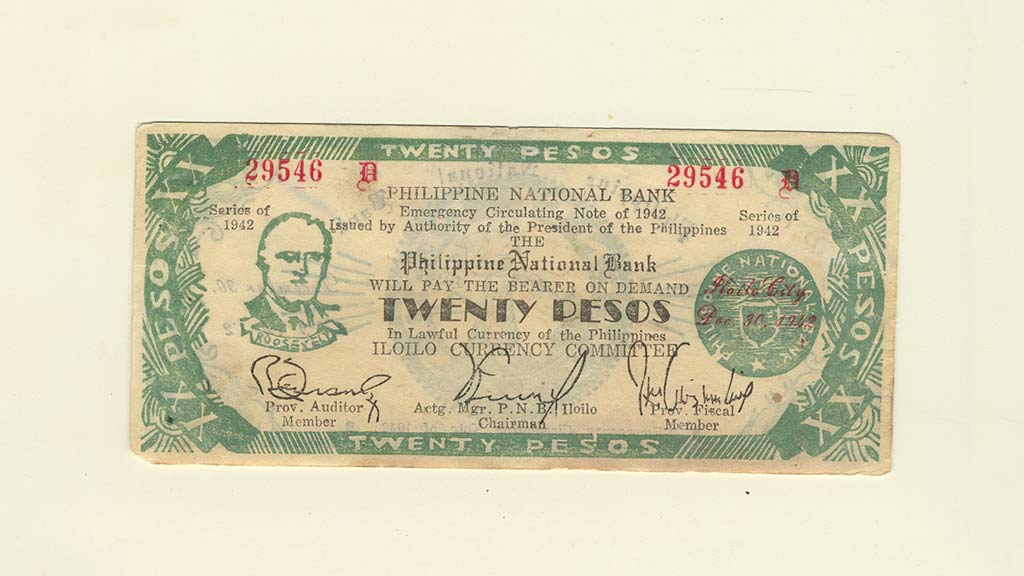 Philippine Commonwealth Government Emergency Circulating Bank Note: 20 Pesos Iloilo Province December 30, 1942 1992.23.1786
Philippine Commonwealth Government Emergency Circulating Bank Note: 20 Pesos Iloilo Province December 30, 1942 1992.23.1786 -

-
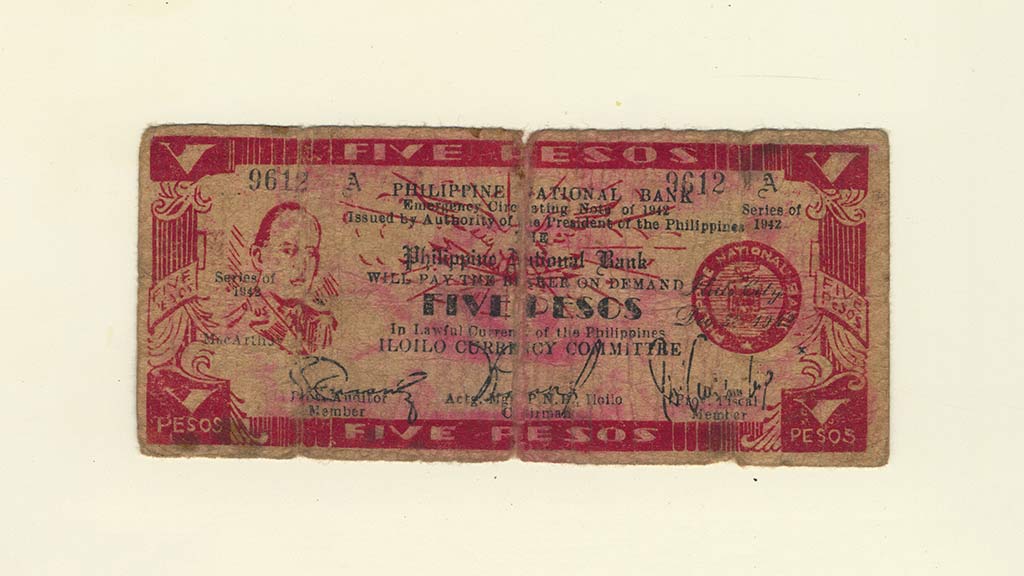 Philippine Commonwealth Government Emergency Circulating Bank Note: 5 Pesos Iloilo Province December 30, 1942 1992.23.1785
Philippine Commonwealth Government Emergency Circulating Bank Note: 5 Pesos Iloilo Province December 30, 1942 1992.23.1785 -
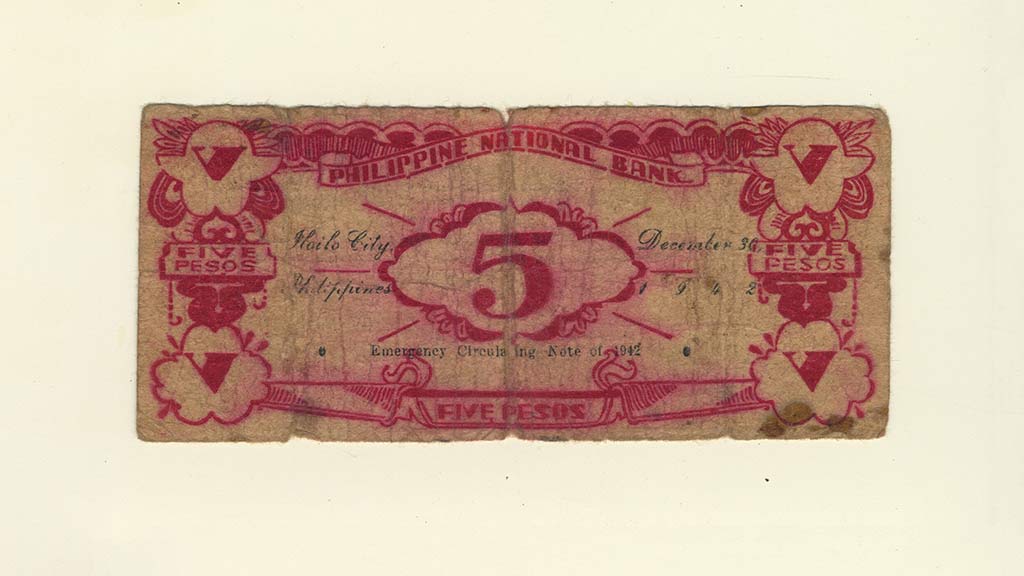
Prior to WWII, the Phillippines was an American colony for a few decades after the Spanish-American War, gaining self-governance in 1938. Throughout the occupation, many Filipinos remained loyal to the United States, a feeling reflected in some of these emergency notes. General Douglas MacArthur authorized the formation of some of the guerilla groups. MacArthur’s popularity stems from this authorization and his famous declaration that he would return to the Philippines after withdrawing to Australia. This declaration may have helped keep morale high for many of the guerilla groups, which ultimately helped topple the Japanese occupiers.
Notes in the province of Iloilo printed pictures with the portrait of General MacArthur in addition to the notes printed with a portrait of Roosevelt. Most emergency notes were printed under the authority of the Philippine National Bank. Many other notes had the words, “Commonwealth of the Philippines.” Other notes even claim the authority of the US Forces. It has been speculated that this was a group of guerillas referring to themselves as US Forces, rather than actual United States military.
-
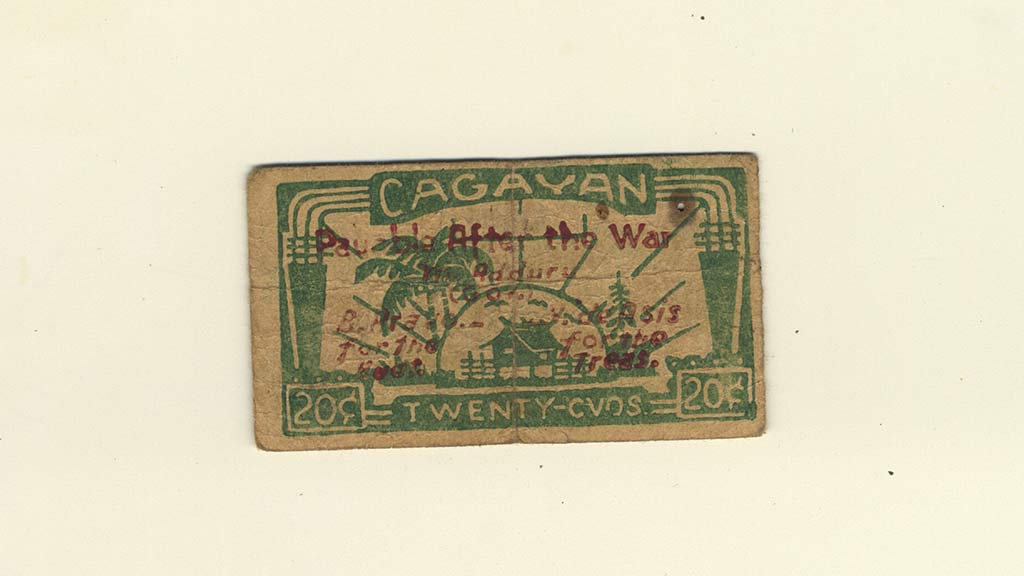 Philippine Commonwealth Government Emergency Circulating Bank Note: 20 Centavos Cagayan Province 1942–1945 1992.23.1729
Philippine Commonwealth Government Emergency Circulating Bank Note: 20 Centavos Cagayan Province 1942–1945 1992.23.1729
After the end of the Japanese occupation, most authorized notes were redeemable at full value. Many still exist today in American collections as a result of American GIs bringing home some of the bills as souvenirs. There were also many stashes of these notes found after the redeemable period had expired. These note stashes were sold as antiques at various markets in the Philippines. Many have since been bought and brought to America by collectors and researchers.
-
- Share:
- Subscribe to Newletter
- Giving